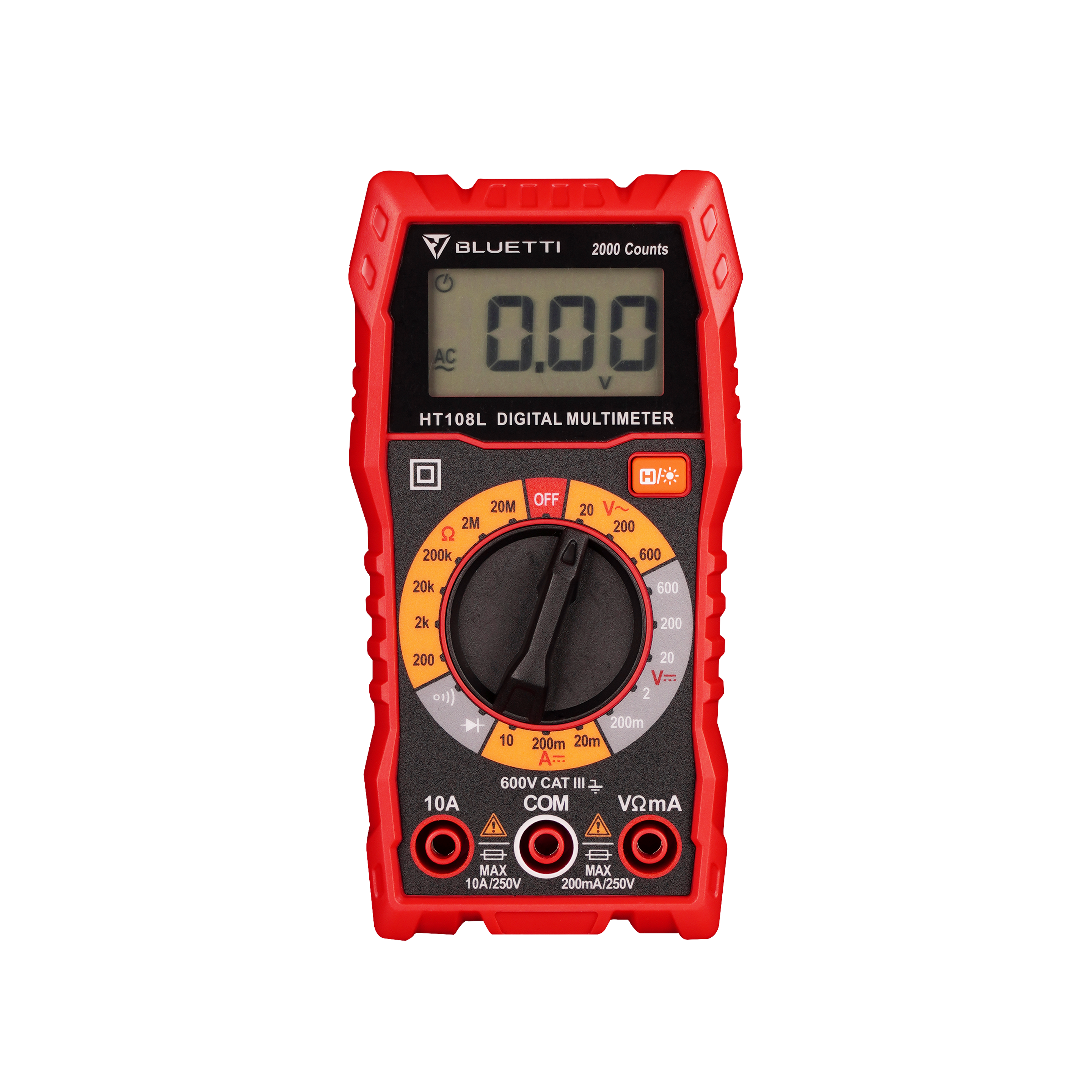Multimeters are an essential tool for electricians, hobbyists, and anyone who needs to measure electrical parameters.
Fluke is a well-known brand that offers a wide range of high-quality multimeters.
In this article, we’ll compare two of Fluke’s popular models: the Fluke 106 and Fluke 107.
We’ll discuss their features, specifications, pros, and cons to help you make an informed decision about which multimeter is right for your needs.
Overview
Before we dive into the specifics of each multimeter, let’s take a quick look at their overall features and specifications:
| Model | Fluke 106 | Fluke 107 |
|---|---|---|
| Display | 3.5 digits | 3.5 digits |
| Basic DC Accuracy | ±0.5% | ±0.5% |
| AC Voltage Range | 600V | 600V |
| DC Voltage Range | 600V | 600V |
| AC Current Range | 10A | 10A |
| DC Current Range | 10A | 10A |
| Resistance Range | 40 MΩ | 6 kΩ |
| Continuity Test | Yes | Yes |
| Diode Test | Yes | Yes |
| Battery Type | 9V | 2 AAA |
| Price | $$ | $$$ |
Related Deals ⬇️⬇️⬇️

BLUETTI Digital Multimeter – $19.90
from: Bluetti Power Inc
Design and Build Quality
The Fluke 106 and 107 are both compact, handheld multimeters that are designed for portability and ease of use. The Fluke 106 has a black and gray color scheme and a slightly larger display compared to the Fluke 107. The Fluke 107 has a bright yellow color scheme that makes it easy to spot in a toolbox or on a job site.
Both multimeters have a sturdy, durable build quality and are designed to withstand harsh conditions. The Fluke 106 has a rubberized holster that provides extra protection against drops and impacts. The Fluke 107 has a molded plastic case that is also designed to withstand drops and impacts.
Display
The Fluke 106 and 107 both have a 3.5 digit display with a backlight for easy reading in low-light conditions. The Fluke 106 has a slightly larger display compared to the Fluke 107, but both displays are clear, easy to read, and provide accurate readings.
Accuracy
Both the Fluke 106 and 107 have a basic DC accuracy of ±0.5%. This means that they provide accurate readings within 0.5% of the actual value. Both multimeters also have a fast continuity test and diode test, which makes them ideal for troubleshooting circuits and electronic devices.
Voltage and Current Ranges
The Fluke 106 and 107 both have a voltage range of up to 600V and a current range of up to 10A. This makes them suitable for a wide range of applications, from simple household repairs to more complex electronic projects.
The Fluke 106 has a resistance range of up to 40 MΩ, while the Fluke 107 has a resistance range of up to 6 kΩ. This means that the Fluke 106 is better suited for testing high-resistance circuits, while the Fluke 107 is better suited for testing low-resistance circuits.
Power Source
The Fluke 106 runs on a single 9V battery, while the Fluke 107 runs on two AAA batteries. The Fluke 106 has a longer battery life compared to the Fluke 107, which makes it more convenient for prolonged use.
Pros and Cons
Fluke 106 Pros:
- Rubberized holster
- Larger resistance range
- Longer battery life
Fluke 106 Cons:
- Higher price compared to the Fluke 107
- Smaller display compared to the Fluke 107
Fluke 107 Pros:
- Bright yellow color makes it easy to spot
- Lower price compared to the Fluke 106
- Lower resistance range is better suited for testing low-resistance circuits
Fluke 107 Cons:
- Smaller display compared to the Fluke 106
- Shorter battery life compared to the Fluke 106
Conclusion
In conclusion, both the Fluke 106 and Fluke 107 are excellent multimeters that offer accurate readings, a wide range of features, and a durable build quality.
The Fluke 106 is better suited for testing high-resistance circuits, while the Fluke 107 is better suited for testing low-resistance circuits.
The Fluke 106 has a larger resistance range and longer battery life, but is also more expensive compared to the Fluke 107.
On the other hand, the Fluke 107 has a bright yellow color scheme that makes it easy to spot, a lower price point, and is more portable due to its smaller size.
Ultimately, the choice between these two multimeters comes down to personal preference and the specific needs of your project.
FAQs
Are the Fluke 106 and 107 multimeters suitable for professional use?
Yes, both multimeters are designed for professional use and offer accurate readings and a durable build quality.
Can the Fluke 106 and 107 multimeters measure capacitance?
No, neither multimeter has a capacitance range. If you need to measure capacitance, you’ll need to choose a different model.
What is the maximum voltage range of the Fluke 106 and 107 multimeters?
Both multimeters have a maximum voltage range of 600V.
How long do the batteries last in the Fluke 106 and 107 multimeters?
The Fluke 106 runs on a single 9V battery, which lasts for approximately 200 hours. The Fluke 107 runs on two AAA batteries, which last for approximately 200 hours.
Are the Fluke 106 and 107 multimeters waterproof?
No, neither multimeter is waterproof. They are designed to withstand drops and impacts, but should not be exposed to water or other liquids.
Advertising Disclosure: offersbird.com is an independent service that is supported by advertising.
offersbird.com may receive compensation from products, sites and advertisements presented on this website.
Copyright © 2023 www.offersbird.com – All rights reserved